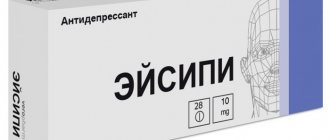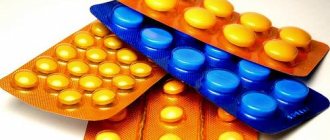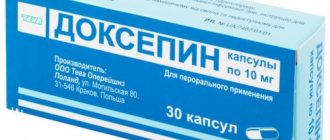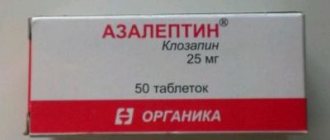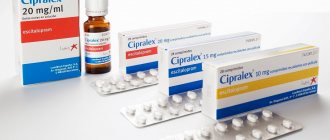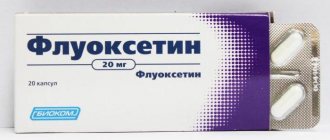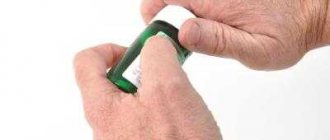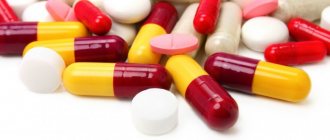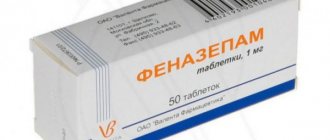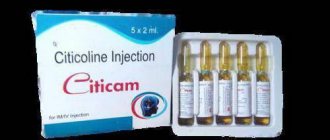In modern medicine, a lot of attention is paid to drugs that help older people fight the gradual degradation of the body’s motor system (tremor, muscle rigidity, hypokinesia, inability to maintain balance) and chronic neurological manifestations.
Levopoda is used as a drug that helps treat and maintain the body in such disorders.
In nature, its main component can be found in plant and animal organisms.
This drug contains levodopa (international name levodopa). In addition, depending on the manufacturer or what the main element is combined with, the medicine may contain the following active substances:
- Benserazide, international name benserazide;
- Carbidopa;
- Entacapone;
- Pergolide;
- Ropinirole;
- Baclofen;
- Salbutamol (Salbutamol);
- Biperiden;
- Trihexyphenidyl;
- Levothyroxine sodium;
- Spiramycin;
- Flupentixol;
- Zuclopenthixol;
- Selegiline.
The medicine looks like a white crystalline powder. Please note that levodopa is not soluble in alcohol and is poorly soluble in water.
This substance is used by nerve cells to produce and restore the balance of dopamine in the blood.
This element practically does not penetrate the brain and therefore it is combined with carbidopa in order to enhance the effect and penetration of the substance from the blood vessels into the human brain.
Among the producers of Levodlpa are such countries and organizations as: Dopaflex (Dopaflex) Egis, Hungarian Republic; Caldopa (Caldopa) Cadila, India; Levodopa Dabur, India, Remedica (Cyprus), TEVA Pharmaceutical Industries (Israel), TEVA Pharmaceutical Works Private (Hungary), F.Hoffmann-La Roche (Switzerland), Roche (Italy),
Among the manufacturers of similar drugs, the following manufacturers of combination drugs can also be identified :
- LEK dd (Slovenia);
- Sandoz (Switzerland);
- Torrent Pharmaceuticals (India);
- Orion corporation orion pharma (Finland).
Do you have an inexplicable feeling of anxiety and fear that develops into panic? This is a vegetative crisis - symptoms and treatment of the disease.
In what cases does atrophy of the cerebral cortex occur and are there effective methods to prevent the process?
Pharmacodynamics and pharmacokinetics
A combined antiparkinsonian drug that contains a dopamine precursor in combination with an inhibitor of peripheral decarboxylase of aromatic L-amino acids. Parkinson's disease is accompanied by insufficient production of dopamine, so replacement therapy is usually carried out by prescribing levodopa.
A significant portion of levodopa is converted to dopamine, which is not involved in the antiparkinsonian effect, since it is difficult for it to penetrate the blood-brain barrier. In this case, the component is responsible for many undesirable reactions.
The simultaneous use of levodopa and benserazide reduces the formation of dopamine in peripheral tissues, which increases the amount of levodopa that enters the central nervous system, reducing the manifestations of adverse reactions.
Absorption of the drug occurs mainly in the upper parts of the small intestine. The maximum concentration is reached within an hour. The therapeutic effect depends on the dose taken. However, absorption is reduced if the drug is taken on a full stomach. As a result of metabolism, several metabolites are formed. Excretion from the body occurs through the intestines and kidneys in the form of metabolites and unchanged.
Reviews from patients and doctors about the drug Levodopa
Let's study reviews about the drug Levodopa. Many people who have taken the drug speak well of it, but the side effects still make themselves felt. It is the presence of a side effect that divides opinions about the drug 50/50.
What do the doctor's say
Doctor Sergey Lirtugin
It has been established that the therapeutic effect is achieved in 50-60% of patients. For the rest, the effect is mild; the dose of the drug cannot be increased due to side effects.
Patient reviews
Peter, 74 years old
In general, in my opinion, everything depends on the perception of this drug by the body. For some, it relieves the symptoms of Parkinson's disease for a long time, but for others it does not - the effect of the drug does not last long, sometimes it enhances involuntary motor reactions.
Vasily, 68 years old
The drug hit the kidneys hard and caused a severe complication of failure. I had to give it up, which is a pity, because the effect was excellent.
Advice from patients
With prolonged use, as well as deterioration of health, you can reduce the dose of the drug taken.
Also, some patients note the effect as an antidepressant, but the drug can lead to addiction.
The side effects of the drug prevent us from giving it an excellent rating, however, in cases where they are absent, the drug copes 100%.
Contraindications Levodopa / Benserazide
The drug is contraindicated for use in:
- hypersensitivity;
- severe disorders of the cardiovascular and endocrine systems;
- liver and kidney diseases - except for restless legs syndrome, with dialysis;
- mental illnesses with a psychotic component;
- angle-closure glaucoma;
- simultaneous use of non-selective MAO inhibitors;
- combination with MAO-A and MAO-B inhibitors;
- lactation, pregnancy;
- under 25 years of age;
- reproductive age in women who do not use reliable methods of contraception.
Side effects
During treatment with Levodopa / Benserazide-Teva, side effects may develop that affect the digestive system, for example: anorexia, vomiting, nausea, diarrhea, loss or change in taste, dry mouth.
Undesirable effects can also affect the activity of the cardiovascular system, manifested by arrhythmia, orthostatic hypotension, and increased blood pressure.
The hematopoietic organs can react with hemolytic anemia, transient leukopenia, and thrombocytopenia.
Most of the undesirable effects are associated with the functioning of the nervous system - these are spontaneous movements, episodes of freezing, a decrease in the effect of treatment, the on-off phenomenon, drowsiness, headache, dizziness, severity of symptoms of restless legs syndrome, anxiety, agitation, insomnia, hallucinations, depression and etc.
In addition, there may be deviations in the activity of the respiratory system, skin disorders, undesirable changes in laboratory parameters, and the development of allergies.
and so on.
Overdose and additional instructions
In case of overdose, the patient’s heart rhythm is disturbed, an involuntary motor reaction appears, etc. And, unfortunately, treatment is only symptomatic, since the drugs administered are not very effective.
The patient requires an inpatient stay in the hospital and constant monitoring of the cardiovascular system, since, if necessary, he will need urgent therapy.
What happens during an overdose
With more severe poisoning, in addition to the symptoms listed above, nausea, vomiting, confusion and insomnia may occur. It often takes quite a long time (since the drug is absorbed by the cells of the body for a long time) before symptoms appear.
Despite all this, treatment remains symptomatic.
Side effect
Side effects are quite serious and affect almost the entire body to one degree or another. Among the risk groups are the following organs and systems of the human body:
- Hematopoietic system. Consequences such as anemia, transient leukopenia, thrombocytopenia may occur.
- Nervous system - headache, dizziness, seizures and other movement disorders
- Mental disorders; very rarely - hallucinations, temporary disorientation.
- Cardiovascular system - arrhythmias, hypotension, increased blood pressure.
- Digestive system. Manifestations in the form of nausea, vomiting and even diarrhea. Sometimes there was a loss or change in taste, dryness of the oral mucosa, as well as gastrointestinal bleeding.
- Skin and subcutaneous tissues - itching or rash.
Article on the topic: Symptoms of pneumonia
According to the results of laboratory indicators, there is an increase in the activity of “liver” cells, which leads to serious consequences.
In addition, febrile fever and excessive sweating may occur.
special instructions
Those taking this medicine must be careful, as an inhibited psychomotor reaction occurs. At the same time, sudden changes in medications or complete cessation may lead to new, more effective treatment options.
In the case of current realities, the patient may need long-term therapy.
During the period of therapy, it is necessary to carry out blood tests relatively often, check the functions of the liver and kidneys.
Drug and alcohol
In this particular case, alcohol only slows down the process of treatment and absorption of the drug in the blood.
If kidney and liver functions are impaired
If liver and kidney function are impaired according to the instructions of the drug to a mild to moderate degree, it is necessary to continue taking the drug without changes in dosage. But in case of severe violations of these functions, taking this drug is prohibited.
Interaction with other drugs
The interaction of the drug with antidepressants is quite dangerous. In this case, there is a high probability of the following symptoms: excitability, increased blood pressure, tachycardia, facial flushing and dizziness.
In addition, the following combinations are dangerous:
- With antihypertensive drugs;
- With anesthetics. Concurrent use of anesthetics may cause arrhythmia;
- With anticholinergics – help relieve tremor;
- With other medications, as directed by your doctor.
During pregnancy and lactation
This drug is contraindicated for both women of childbearing age and pregnant and young mothers. Defects in the development of internal organs and skeleton were identified in animal experiments.
Reception by children
The drug is not safe for children and is not prescribed for children under 25 years of age.
Instructions for Levodopa / Benserazide (Method and dosage)
According to the instructions, the tablets should be taken orally, half an hour before or an hour after meals.
The therapeutic course begins with a small dosage, gradually increasing the dose, taking into account the individual characteristics of the patient, until the therapeutic effect is fully achieved. In this case, you need to refrain from taking the maximum permissible doses.
For patients who have not previously taken levodopa, the initial daily dosage of levodopa/benserazide is prescribed within the range of 50/12.5 mg for 2-4 times a day.
If the drug is well tolerated by the patient, the dose is gradually increased to double the dose until a therapeutic effect is achieved. In the future, adjustments are allowed no more than once a month.
The maximum daily dosage is 800/200 mg levodopa/benserazide. In this case, the dosage is divided into 4 or more doses.
Interaction
Drugs that are classified as opioid analgesics
and antipsychotics, as well as antihypertensive drugs that contain
reserpine
, significantly weaken the effectiveness of this medicine. If you plan to use levodopa simultaneously with MAO inhibitors - except MAO-B (selegin), then it is recommended to stop taking irreversible inhibitors at least two weeks before. Otherwise, if the deadline is not met, serious consequences are possible, for example, the development of a hypertensive crisis. This is due to the fact that under the influence of MAO inhibitors, the inactivation of levodopa, norepinephrine and dopamine is inhibited, so the risk of a sharp increase in blood pressure and increased heart rate is very high.
If halothane is introduced into the body as prescribed by a doctor, then its use should be stopped two days before the appointed date, for example, when awaiting surgery under general anesthesia. Otherwise, there is a risk of significant fluctuations and interruptions in heart rhythm. Levodopa also enhances the effect of drugs related to sympathomimetics - these are Epinephrine, Norepinephrine, Isoprenaline, Amphetamine
and their analogues.
Other medications that are used to treat Parkinson's disease, such as anticholinergics, amantadine, dopamine agonists
, can increase side effects.
In addition, during treatment you should not eat foods rich in protein, as this may reduce the absorption of levodopa in the digestive tract.
Drug interactions
The simultaneous use of the drug in question and “Ditilin”, beta-agonists and agents intended for inhalation anesthesia increases the likelihood of developing cardiac arrhythmias.
The bioavailability of Levodopa can be reduced by tricyclic antidepressants.
The combination of this medication with Thioxanthene, Diazepam, antipsychotic drugs, Phenytoin, m-cholinergic blockers, Clonidine, Diphenylbutylpiperidine, Papaverine, Clozapine, Phenothiazine, Pyridoxine and Reserpine quite often reduces its antiparkinsonian effect.
Lithium drugs increase the likelihood of hallucinations and dyskinesias, and the drug Methyldop increases adverse reactions.
The combination of MAO inhibitors and Levodopa leads to circulatory disorders. In this regard, the interval between taking such medications should be at least 14 days.
A pronounced decrease in pressure is observed when the drug in question is combined with Tubocurarine.
The drug Metoclopramide increases the bioavailability of Levodopa, accelerating gastric emptying. This fact can negatively affect the course of the disease.
Special conditions
Before starting the course, you must undergo a full medical examination. There are a number of diseases for which treatment should be started with caution. Namely:
- in the presence of glaucoma (especially open-angle), the course of treatment is not started until complete recovery. It may even go as far as surgery, which is recommended if intraocular pressure is not normal;
- You should not quickly stop taking halothane, as this may cause the manifestation of neuroleptic malignant syndrome during general anesthesia.
Persons with hypersensitivity to the drug may develop corresponding reactions.
Adverse reactions from the digestive system, which are possible during the initial stage of treatment, are largely eliminated if Levodopa / Benserazide is taken with a small amount of food or liquid, as well as by slowly increasing the dose. Patients with open-angle glaucoma should have their intraocular pressure measured regularly because levodopa may theoretically increase intraocular pressure. In patients taking levodopa, it is recommended to periodically monitor blood count, liver and kidney function. In addition, at the beginning of taking the drug, physiological indicators may change, as shown by laboratory tests. Therefore, you need to constantly take tests to monitor the proper functioning of your internal organs. Patients with diabetes need to test their blood glucose levels several times a day.
. Patients with diabetes mellitus should frequently monitor blood glucose levels and adjust the dose of hypoglycemic drugs.
If possible, Levodopa / Benserazide should be continued for as long as possible before general anesthesia, with the exception of halothane anesthesia. Since fluctuations in blood pressure and arrhythmias may occur in a patient receiving Levodopa / Benserazide during halothane anesthesia, the drug should be discontinued 12-48 hours before surgery. After surgery, treatment is resumed, gradually increasing the dose to the previous level. The drug should not be discontinued abruptly. Abrupt discontinuation of the drug can lead to the development of neuroleptic malignant syndrome (fever, muscle rigidity, as well as possible mental changes and increased serum CPK), which can take a life-threatening form. If such symptoms occur, the patient should be under medical supervision (if necessary, hospitalization) and receive appropriate symptomatic therapy, which may include re-administration of Levodopa / Benserazide after an appropriate assessment of the patient's condition. Depression can be a clinical manifestation of an underlying disease (parkinsonism, restless legs syndrome) and can also occur during Levodopa/Benserazide therapy. Patients taking Levodopa/Benserazide should be closely monitored for the potential for psychiatric adverse reactions. Some patients with Parkinson's disease have experienced the appearance of behavioral and cognitive disorders as a result of uncontrolled use of increasing doses of the drug, despite the doctor's recommendations and significantly exceeding therapeutic doses of the drug.
Impact on the ability to drive vehicles and operate machinery
During the treatment period, extreme caution should be exercised when performing work that requires increased attention; it is advisable to refrain from driving a car.
If drowsiness or sudden episodes of drowsiness occur, the patient should stop driving a car or working with machines and mechanisms. If these symptoms occur, dose reduction or discontinuation of therapy should be considered.
Pharmacological properties
Pharmacodynamics
The antiparkinsonian drug is a combination of two active components: a dopamine precursor, levodopa, and a peripheral aromatic L-amino acid decarboxylase inhibitor, benserazide.
In patients with Parkinson's disease, the neurotransmitter dopamine is produced in insufficient quantities in the basal ganglia. When using levodopa, a biogenic substance that is a direct metabolic precursor of dopamine, replacement therapy occurs. Since a large proportion of taken levodopa is converted into dopamine in the interstitial tissues of the intestines, liver, kidneys, heart, stomach, peripheral dopamine formed in this way does not take part in the antiparkinsonian effect of levodopa, since it penetrates poorly through the BBB (blood-brain barrier), except Moreover, it is responsible for most of its unwanted effects.
To improve the effect of levodopa, blocking its extracerebral decarboxylation is highly desirable. Due to the administration simultaneously with levodopa of the peripheral decarboxylase inhibitor of aromatic L-amino acids benserazide, which reduces the formation of dopamine in peripheral tissues, firstly, the amount of levodopa entering the central nervous system (central nervous system) indirectly increases, and secondly, the manifestation of undesirable reactions of levodopa is reduced. The combined use of levodopa and benserazide in a 4:1 ratio has the same effect as high-dose levodopa monotherapy.
Pharmacokinetics
- absorption: levodopa and benserazide are absorbed mainly in the upper part of the small intestine. The maximum concentration (Cmax) in plasma after oral administration of the drug is reached after approximately 1 hour. The area under the concentration-time curve (AUC) and Cmax vary in direct proportion to the dose taken. Absorption also depends on intragastric pH and the rate of gastric emptying. The presence of food in the stomach slows down absorption. Taking the drug after meals reduces Cmax in plasma by 30% and increases the time to reach it. The degree of absorption is reduced by 15%. The drug is found in large quantities in the small intestine, kidneys and liver; only about 1–3% penetrates into the brain. The half-life (T1/2) of the drug is approximately 3 hours;
- distribution: levodopa - penetrates the BBB through a saturable transport system, does not bind to plasma proteins, Vd (volume of distribution) is 57 l, AUC in the cerebrospinal fluid is 12% of the plasma value; benserazide – does not penetrate the BBB, accumulates mainly in the small intestine, kidneys, lungs, and liver, penetrates the placental barrier;
- metabolism: levodopa - is metabolized mainly by two main pathways (o-methylation and decarboxylation) and two additional ones (oxidation and transamination). Levodopa is converted into dopamine by aromatic L-amino acid decarboxylase. At the end of this pathway, the main metabolic products are formed - dihydroxyphenylacetic and homovanillic acids. 3-o-methyldopa is formed from levodopa when it is methylated by catechol-o-methyl transferase. This main metabolite has a T1/2 of 15 hours, as a result of which patients who have received therapeutic doses of the drug accumulate it. The use of levodopa with benserazide leads to a decrease in its peripheral decarboxylation, an increase in plasma concentrations of levodopa and 3-o-methyldopa, a decrease in the level of catecholamines (dopamine and norepinephrine), and a decrease in the concentration of phenolcarboxylic acids (homovanillic and dihydrophenylacetic). Benserazide undergoes hydroxylation in the liver and intestinal mucosa to form trihydroxybenzylhydrazine, a metabolite that is a powerful inhibitor of aromatic L-amino acid decarboxylase;
- excretion: T1/2 of levodopa against the background of peripheral inhibition of aromatic L-amino acid decarboxylase is 1.5 hours, its plasma clearance is 430 ml/min; Benserazide is eliminated almost completely by metabolism, its metabolites are mainly excreted by the kidneys - up to 64%, and to a lesser extent by the intestines - up to 24%. Absolute drug accumulation averages 98% (range 74–112%).
Since less than 10% of unchanged levodopa/benserazide is excreted by the kidneys, no dose adjustment is required for mild to moderate renal impairment.
In old age (65–78 years) in patients with Parkinson's disease, T1/2 and AUC of levodopa increase by 25%; these changes are not clinically significant.
Shelf life of Levodopa / Benserazide
2 years.
Levodopa / Benserazide during pregnancy
Contraindicated during pregnancy and in women of childbearing age who do not use reliable methods of contraception, due to possible disruption of skeletal development in the fetus. If pregnancy occurs during treatment with Levodopa/Benserazide, the drug should be discontinued immediately in accordance with the recommendations of the attending physician. It is not known whether benserazide is excreted in breast milk. If it is necessary to use the drug during lactation, breastfeeding should be stopped, since skeletal development disorders in the child cannot be ruled out.
Contraindications
According to many patients, the drug Levodopa helps very well with Parkinson’s disease. The instructions for use, however, do not prescribe taking it in all cases. Contraindications to the use of this drug are:
- angle-closure glaucoma;
- melanoma;
- severe psychoses;
- essential tremor;
- Huntington's disease;
- neuroses;
- skin diseases of unknown origin.
This medicine is also not prescribed to children under 12 years of age. It is also contraindicated during pregnancy. Otherwise, the fetus may experience pathologies in the development of the spine. It should not be used during lactation either. For gastric ulcers, severe pathologies of the cardiovascular system, and for problems with the lungs, the drug is prescribed with caution.


